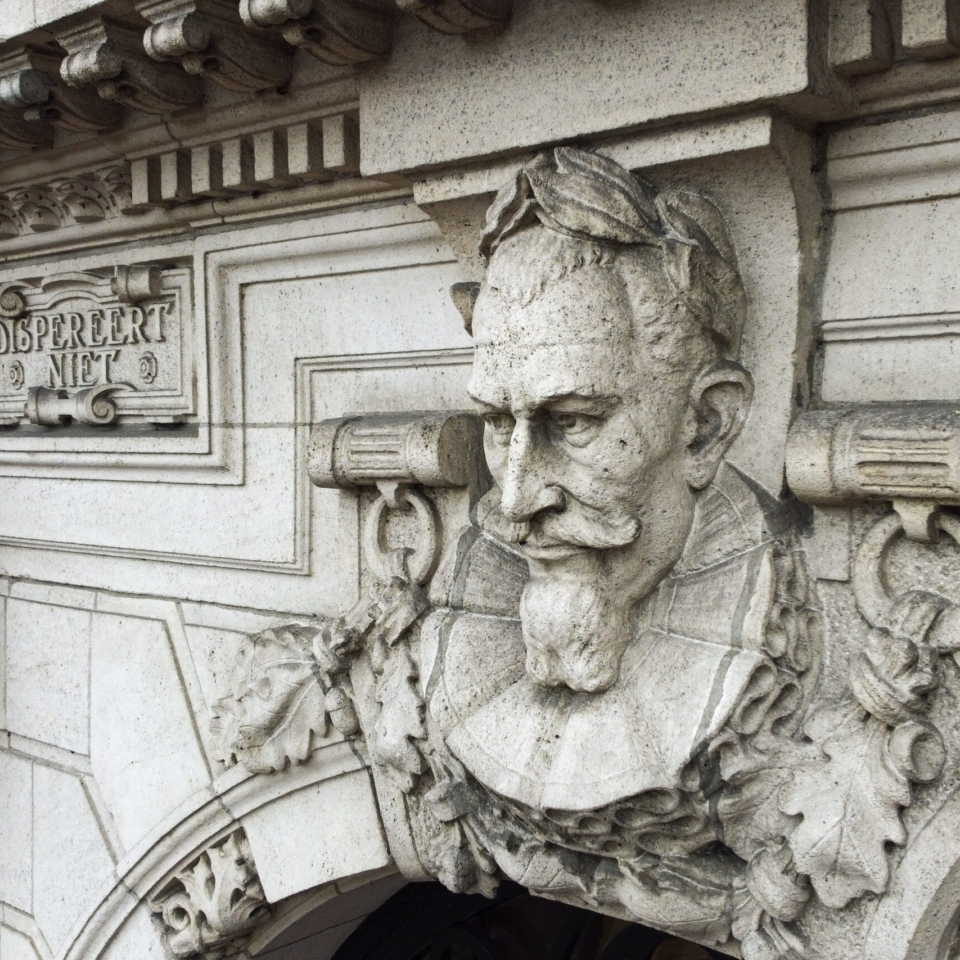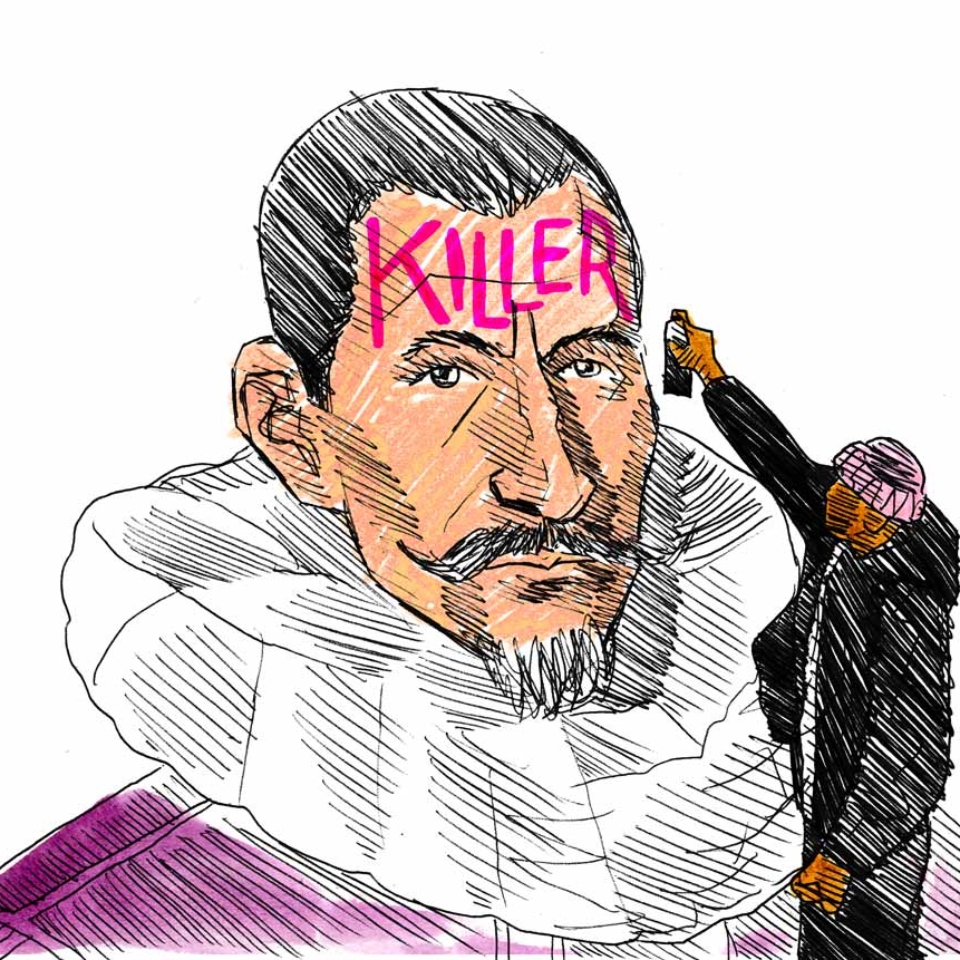Enter the KIT by the main entrance, the old Koloniaal Instituut’s main entry, and the first thing you see are two classic nude male figures above the portal. The young man on the left holds a statue of Buddha, while at his feet is a makara, a mythical water creature; both symbolise the Indo-Javanese period. The greybeard on the right is fitting callipers to a globe. Several books are presented. Between the two figures is an altar with a burning flame of scientific knowledge, recalling a Biblical quote illustrated elsewhere in the building, ‘Neither do men light a candle, and put it under a bushel’ (‘but on a candlestick; and it giveth light unto all that are in the house’), Jesus’ command according to his apostle Matthew. It symbolises the Netherlands’ imagined role as a ‘light-bringer’, carrying out what was considered the important colonial duty of bringing Christian values, civilisation and progress throughout the world.
Above the door frame is the iconic and now contested fourth Governor General of the VOC, Jan Pieterszoon Coen. The Koloniaal Instituut intended this portrait, along with two other references within the building, as an homage to the person who has been regarded as the founder of the Dutch colonising activities. After conquering and destroying the coastal city of Jayakarta, Coen founded Batavia in 1619.
This city became the centre of the colonial empire. In 1621, Coen had thousands of inhabitants of the Banda archipelago killed. Many now consider him one of the most notorious symbols of colonial violence. Discussions about and acts against colonial monuments in the Netherlands often involve sculptures and other portrayals of Coen.
The passage to the KIT’s main entrance contains more ornaments. The importance of the Indonesian archipelago is expressed through a reference to the famous medieval verses ‘Het daghet in den oosten’ (It’s dawning in the east) above the side door to the left and ‘Het lichtet overal’ (There’s light everywhere) to the right. This emphasises the Koloniaal Instituut’s ambition to be a national repository of colonial knowledge. Such knowledge was crucial to the preservation and maintenance of Dutch colonial power.
The arched windows by the gate are surrounded by portraits of indigenous peoples of the then-Dutch East Indies and Asian plants and fruits; examples of the region’s natural plenty, fecundity and wealth.






